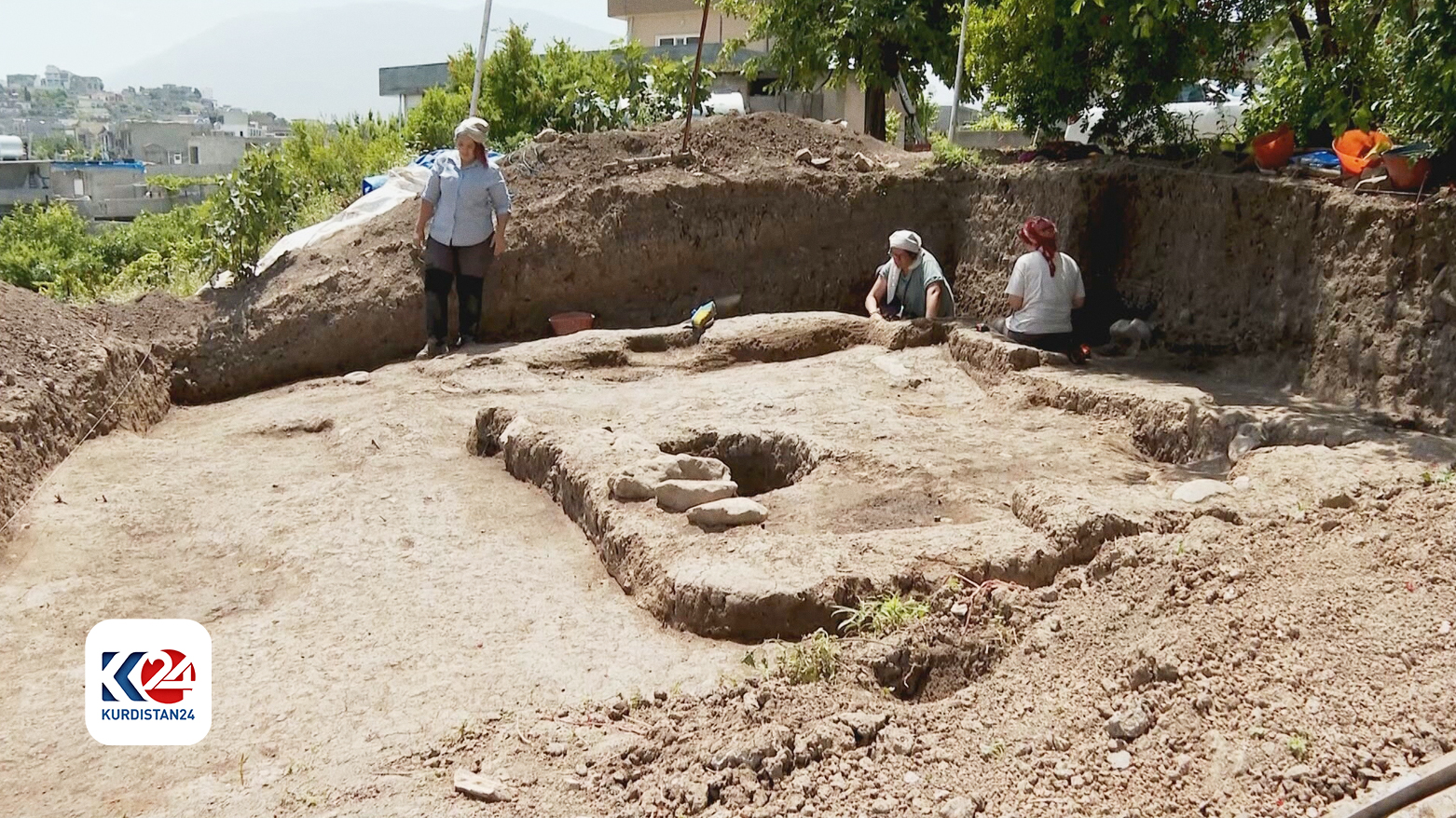Joint archaeological team uncovers 7,000-Year-Old remains in Soran
The project aims to uncover archaeological remains that could date back 7,000 years, spanning four different eras of human history.

ERBIL (Kurdistan 24) – A joint team from the University of Barcelona, Salahaddin University, and the Soran Archaeology Directorate has been excavating the Banahilk archaeological site in the center of Soran town for the past six years.
The project aims to uncover archaeological remains that could date back 7,000 years, spanning four different eras of human history.
Professor Ana Gomez from the University of Barcelona explained the significance of their findings: “Six years ago, we had the opportunity to start working here. The houses are made of mud in circular shapes, with painted dishes, cooking utensils, and animal bones. This is important because it indicates their ability to bring and distribute items from abroad.”
The team has discovered animal bones in pots with various carbon layers and carvings with different shapes and stories. The Kurdistan Region boasts 5,000 archaeological sites, with 1,200 registered in the Soran Independent Administration.
Abdulwahhab Sulaiman, director of Soran archaeology, highlighted the architectural advancements of the region's ancient inhabitants: “The shape of the houses in the Halaf period was circular or T-shaped, but here all the houses are angular and rectangular, showing that the people who lived in Kurdistan were very advanced in terms of architecture.”
The Banahilk site was initially excavated in the late 1940s by archaeologists from the University of Chicago, who found remains from the Halaf culture during a brief 10-day dig.
Now, after six years of continuous work, archaeologists have uncovered remains from four distinct periods: the Halaf, Chalcolithic, Bronze, and Islamic eras.
In 2018, a team of researchers from the University of Cambridge embarked on an excavation expedition to Shanidar Cave in the Kurdistan Region, a site renowned for its significance in Neanderthal research.
The unveiling of the reconstructed face of a 75,000-year-old Neanderthal woman, Shanidar Z, has sparked international interest and ignited discussions about human evolution, cultural practices, and the interactions between Neanderthals and modern humans.
Read More: Reconstruction of Neanderthal woman Shanidar Z garners global attention
In a groundbreaking revelation, the University of Cambridge has unveiled the reconstructed face of a Neanderthal woman named Shanidar Z, shedding new light on the lives and behaviors of our ancient ancestors.
Read More: Archaeologist discusses discovery of Neanderthal skull in Shanidar Cave
This extraordinary discovery, made possible through meticulous excavation and cutting-edge scientific techniques, has captivated researchers and the public alike, challenging longstanding perceptions of Neanderthals as primitive beings.
